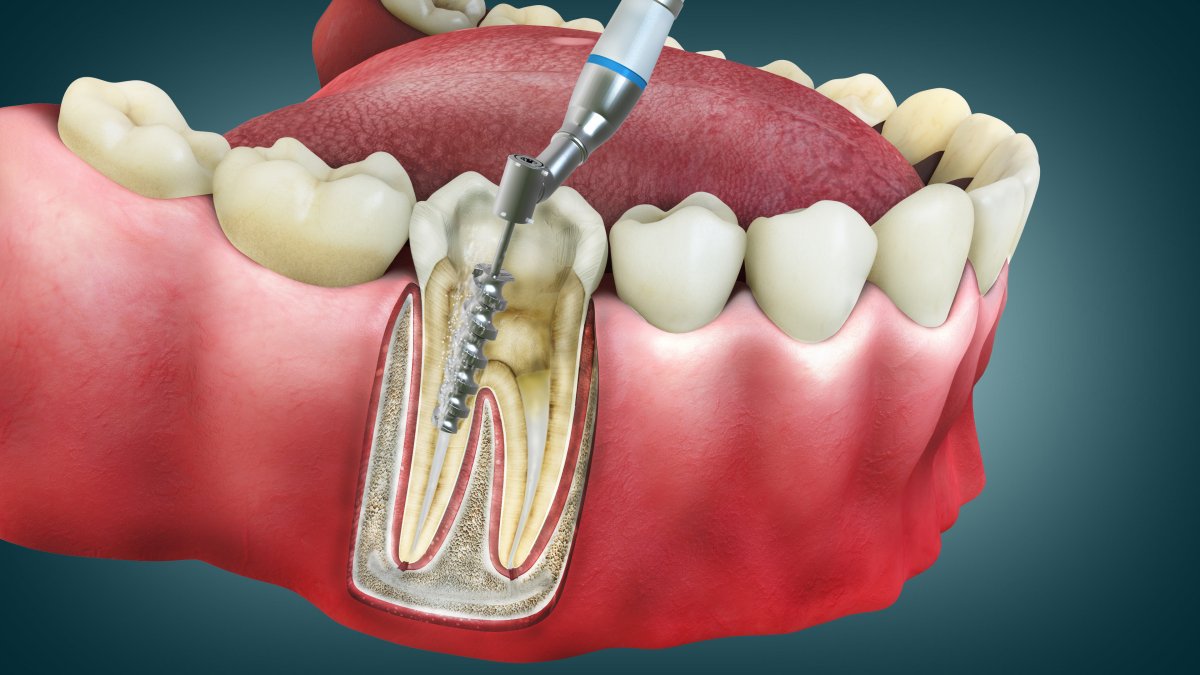Scientists are testing a new treatment for advanced tooth decay that could eliminate the need for dental professionals to drill into the deepest, most sensitive parts of your teeth.
Researchers have discovered that molecules called resolvins regenerate tissue when applied to dental pulp, potentially saving fearful children of all ages from the dread of the dentist’s drill. They could be used deep inside a tooth, allowing patients to avoid the dreaded long root canal treatments, according to new research on Journal of Dental Research.
“Pulpitis (inflammation of the dental pulp) is a very common oral health disease that can become a serious health condition if not treated properly,” said Thomas Van Dyke, study co-author and vice president in the Center for Clinical and Translational Research at the ADA . Forsyth, said in a statement.
ISTOCK / GETTY IMAGES PLUS
A tooth is made up of many layers, with the hard enamel on the outside, the dentin underneath, and the deeper inside, the pulp. The pulp contains all the blood vessels and nerves that keep the teeth alive. It can become inflamed from cavities, cracks in the tooth or other injuries, with infections running the risk of killing the pulp and causing immense pain.
Typically, root canal treatments are used when there are infections in the pulp, painstakingly removing the infected tissue and filling the gaps with biocompatible material.
“Root canal treatment (RCT) is effective, but it has some problems as you remove significant parts of the dentin and the tooth dries out resulting in a greater risk of fracture down the road. Our goal is to find a method to regenerate the pulp, instead of filling it the root canal with inert material,” Van Dyke said.
Resolvin E1 (RvE1) and other resolvins are produced naturally by the body and are included in a group of molecules called Specialized Pro-Resolving Mediators (SPMs). These substances are effective controllers of excessive inflammation caused by infection and disease.
The study found that when RvE1 was applied to different levels of infected and damaged pulp, it was very effective at regenerating the pulp when applied directly to it while the pulp was still alive. However, they found that when RvE1 was applied to highly infected pulp or dead pulp, it did not induce regeneration but helped slow the rate of infection and reduce inflammation.
“In infected pulps exposed to the oral environment for 24 hours, RvE1 suppressed inflammatory infiltration, reduced bacterial invasion of root canals, and prevented the development of apical periodontitis, while its regenerative effect was limited,” the authors write in the paper.


ISTOCK / GETTY IMAGES PLUS
The study was conducted on mice, not humans, so more research will be needed to see if RvE1 has the same effects on us and if it is safe to use. Regardless, scientists are optimistic about the future of this treatment in dentistry and beyond.
“The application of RvE1 to the dental pulp promotes the formation of the type of stem cells that can differentiate into dentin (tooth), bone, cartilage or fat, this technology has enormous potential for the field of regenerative medicine beyond the tissues in teeth Van Dyke said. “It could be used to grow bones in other parts of the body, for example.”
Do you have a tip for a science story that Newsweek should it cover? Have a question about dental health? Let us know via science@newsweek.com.
Uncommon Knowledge
Newsweek is committed to challenging conventional wisdom and finding connections in search of common ground.
Newsweek is committed to challenging conventional wisdom and finding connections in search of common ground.


